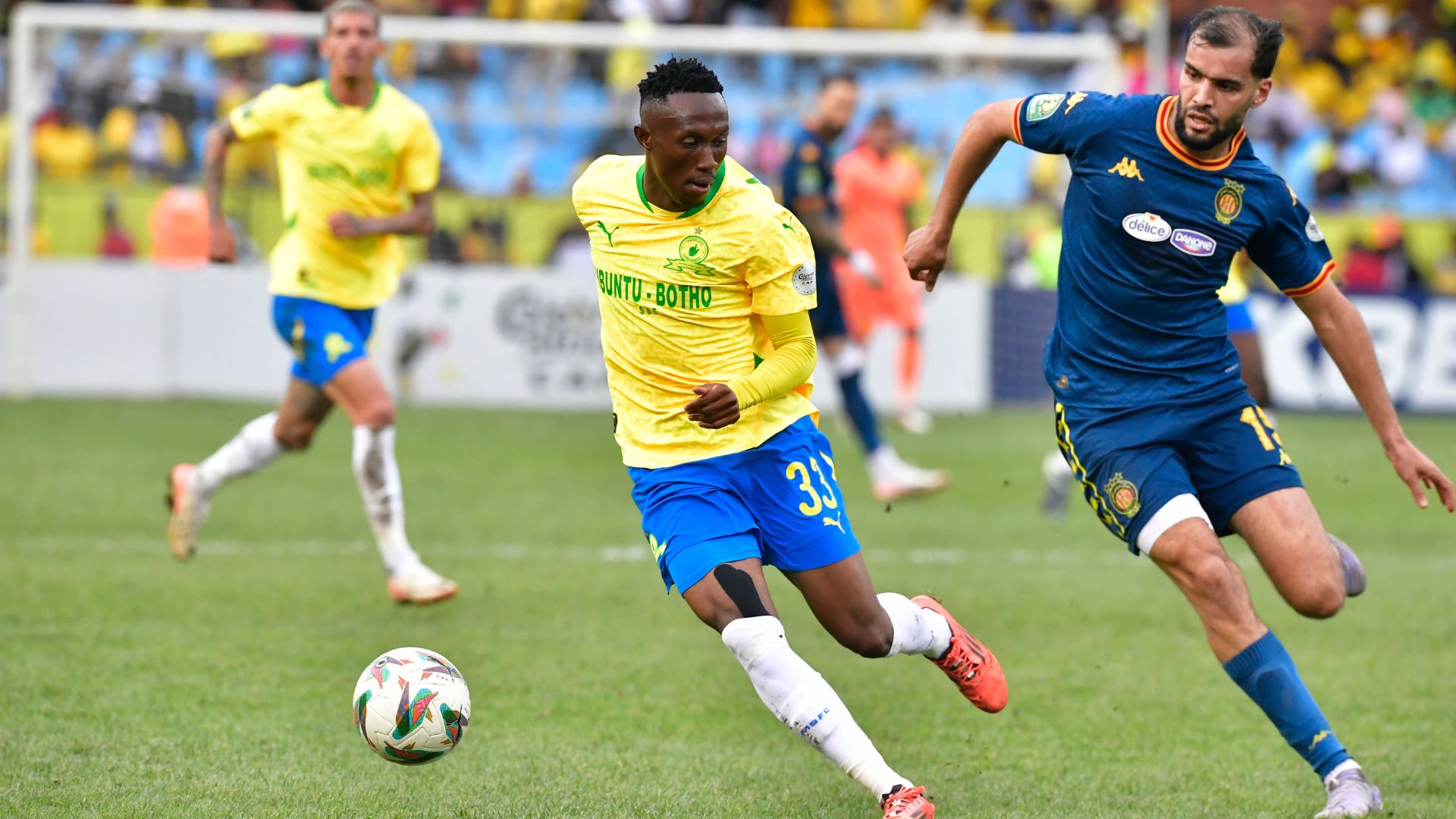The CAF Champions League returned to action on Tuesday afternoon with South African giants Mamelodi Sundowns hosting Esperance de Tunis in the first leg of their quarter-final clash at Loftus Versfeld Stadium. Masandawana entered the fixture on a historical disadvantage, having only won one of their previous eight encounters against the Tunisian giants, with that solitary victory dating back to 2000. Overcoming this mental hurdle was crucial for Miguel Cardoso’s side to secure a positive result. Kariobangi Sharks star midfielder secures trials with Norwegian top tier sideTeam Lineups Cardoso deployed a base 4-2-3-1 formation with Ronwen Williams between the sticks. Khuliso Mudau and Aubrey Modiba operated as fullbacks, while Grant Kekana and Lucas Suarez partnered in central defense. Marcelo Allende and Teboho Mokoena formed the double pivot, with Jayden Adams playing as the attacking midfielder. Thapelo Morena and Lucas Ribero were stationed on the flanks, while Peter Shalulile led the line. Maher Kanzari, on the other hand, set up Esperance in a disciplined 4-4-2. Ben Said started in goal, with Raed Bouchniba and Amine Ben Hamida as fullbacks. ##NAJAVA_MECA_8823629##Mohamed Tougai and Hamza Jelassi anchored the heart of the defense. Khalil Guenichi and Onuche Ogbelu played centrally in midfield, flanked by Yan Sasse and Abdramane Konaté. Upfront, Youcef Belaïli partnered Elias Mokwana in the attack. Tactical Setup Sundowns maintained their trademark narrow approach, dictating play predominantly through the central channels and half-spaces. In possession, they adopted a 2-2-2-4 shape, building from the back with the center-backs distributing to the central midfielders—Allende and Mokoena—who dropped deep to receive the ball. Harambee Stars defender appointed captain of Malawian giantsThe duo then sought to penetrate Esperance’s defensive lines by linking up with the attacking midfielders. When necessary, the ball was worked out wide to the advancing fullbacks, who aimed to deliver cutbacks into the box. The heatmap of the left-backs illustrated their involvement in the attacking phases. In the first half, Ribero and Shalulile spearheaded the attack, with Shalulile displaying his work rate by tracking back to aid in defense. However, Ribero struggled for time on the ball due to close attention from the Esperance defenders. Esperance defended resolutely in a compact low block, allowing Sundowns possession but pressing aggressively whenever they attempted to break into the final third. The midfielders engaged the Sundowns’ playmakers immediately, congesting the central areas and forcing turnovers. This led to much of the play being concentrated in the middle third, as reflected in the match statistics. Defensively, Sundowns operated with seven players behind the ball and executed an intense counter-press to win back possession quickly, denying Esperance opportunities in transition. For the visitors, the game plan was clear—defend deep and hit Sundowns on the break. Deploying Belaïli centrally underscored this intent, given the Algerian’s ability to carry the ball over both short and long distances. Esperance’s defensive structure alternated between a 5-4-1 and 4-5-1, depending on the phase of play, frustrating Sundowns by restricting them to long-range efforts, as illustrated in the shot map. Second-Half Adjustments Cardoso introduced Divine Lunga for Modiba and Arthur Sales for Morena, signaling a more attacking intent. This tactical tweak altered Sundowns’ approach—Ribero dropped into the right half-space while Sales slotted in behind Shalulile, who now operated as a more traditional striker with reduced defensive responsibilities. Adams occupied the left half-space, making penetrating runs into the box to support Shalulile. The increased ball circulation posed problems for Esperance, as the quicker tempo disrupted their defensive organization. Ribero, now operating deeper, had more time on the ball and became increasingly influential. ##NAJAVA_MECA_8823519##The breakthrough arrived in the 54th minute when Ribero found space to deliver a precise diagonal ball between the center-back and fullback. Adams made a well-timed run, cushioning the ball into Shalulile’s path, and the Namibian striker made no mistake from close range—a textbook execution of Cardoso’s second-half strategy. Trailing, Esperance had to abandon their defensive approach and adopt a more aggressive pressing approach. The introduction of Rodrigo Rodrigues underscored this shift as they pushed for an equalizer. However, Sundowns remained resolute, managing the game effectively to secure a vital victory ahead of the second leg. FIFA steps in as match-fixing allegations against Patrick Matasi take a new turnConclusion This result gives Sundowns a crucial advantage heading into the return leg, but they will need to be wary of Esperance’s response in Tunisia. While their control of possession was evident, converting dominance into clear-cut chances remains an area for improvement. For Esperance, the challenge will be finding a balance between defensive solidity and attacking urgency. The second leg promises to be a fascinating tactical battle, with everything still to play for.

